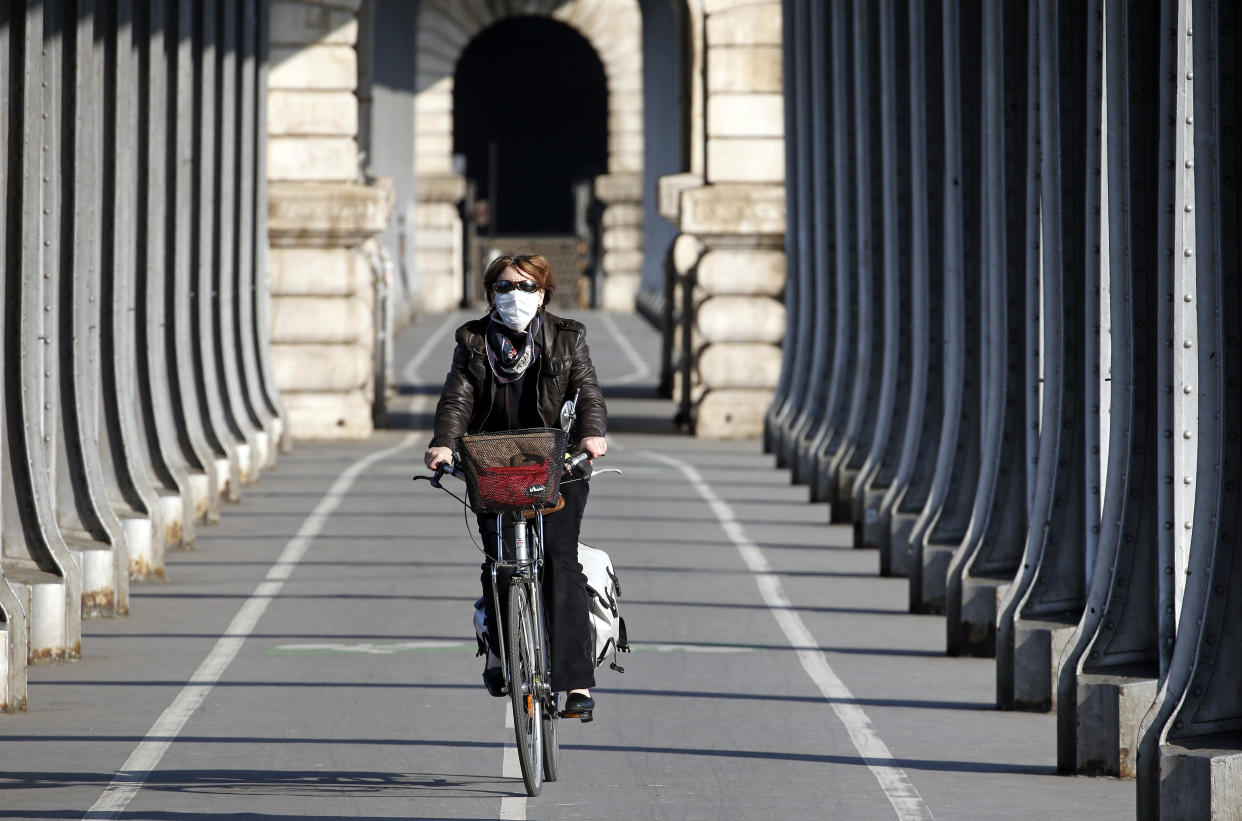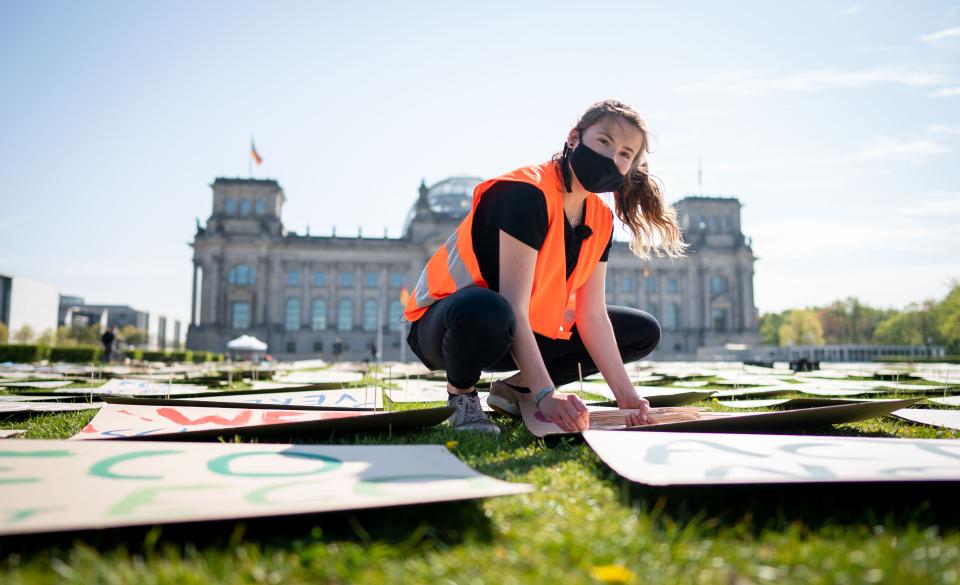Coronavirus: People who develop a rash, hives or chilblains should self-isolate, experts urge

Experts have urged people who develop unusual dermatological symptoms amid the coronavirus outbreak to self-isolate.
Fever and a dry persistent cough are considered the tell-tale signs of infection. Draconian measures mean Britons must self-isolate entirely at home for seven days if they develop either of these warning signs.
Coronavirus sufferers have complained of a host of other discomforts, however, including headache, diarrhoea and a loss of smell or taste.
Hospital reports from throughout Europe – once considered the epicentre of the pandemic – reveal patients are developing hives, chilblains, and even black-crusted pus-filled lesions on their hands and feet.
While it may sound far-fetched that a respiratory infection could lead to dermatological symptoms, one doctor argued that by triggering an immune response, any part of the body can theoretically be affected.
Early research suggests the coronavirus is mild in four out of five cases, however, it can cause a respiratory disease called COVID-19.

Coronavirus: Evidence it can affect the skin
Concerns the coronavirus may trigger skin irritation were first raised by a doctor from the Alessandro Manzoni Hospital in Lecco, Italy.
The medic reported how one in five (20%) of the hospital’s COVID-19 patients developed a “cutaneous manifestation”.
For some this occurred at the onset of the disease, while others developed skin irritation in hospital.
Three patients suffered hives all over their body.
Latest coronavirus news, updates and advice
Live: Follow all the latest updates from the UK and around the world
Fact-checker: The number of COVID-19 cases in your local area
Explained: Symptoms, latest advice and how it compares to the flu
Doctors from The Regional Hospital of Orléans in France later reported an “eruption” of hives in a 27-year-old patient before she developed a fever or cough.
The patient arrived at hospital complaining of pain when she swallowed. This was followed by joint discomfort and the onset of itchy red “plaques”, particularly on her face, fingers and toes.
Two days later, she developed a fever and tested positive for the coronavirus.
In contrast, a team from the Ramon y Cajal Hospital in Madrid reported how a 32-year-old woman with the coronavirus developed hives six days after the onset of the infection’s tell-tale symptoms.
Rashes and hives aside, chilblains have also been noted, particularly among young patients.
A team from the International Federation of Podiatrists reported how a 13-year-old boy developed “foot lesions”, which began to “intensely burn” and itch two days later.
After treating it as a spider bite, small spots of blood and “blackish crusts” began to appear in the sores. This has been dubbed “COVID toes”.
Both the pain and lesions eased after several days.
The podiatrists later discovered the boy’s mother and sister developed a fever, cough and shortness of breath six days before his symptoms emerged.
None of the family were tested for the coronavirus, however, the medics argued similar reports have emerged throughout Italy.
The “emergency situation” means milder cases are going undiagnosed as doctors prioritise who gets swabbed.
Nevertheless, “in recent decades we have never seen two such exceptional events at the same time: a viral epidemic and an epidemic of lesions of some toes and fingers”, wrote the podiatrists.
They noted how toes tend to be affected more than fingers.
Three “digits” per hand or foot generally develop lesions, “often separated by unaffected toes and fingers”.
Lesions often appear purple or “bluish”, later filling with fluid or developing a black crust.

‘It’s better to be overcautious and self-isolate’
The coronavirus itself is a respiratory infection, however, it triggers an immune response that can extend far beyond the airways.
“It fosters a huge immune response so it can affect every part of the body,” Dr Veronique Bataille, a dermatologist at The Medical Chambers, told Yahoo UK.
“It could give kidney damage, heart damage.”
Scientists from the University of Texas in Houston previously stated “the high inflammatory burden” of the virus may lead to “significant cardiovascular complications”.
Any viral infection, like a cold or flu, has the potential to cause a rash by stimulating the immune system.
“Skin rashes are common among individuals with viral infections and take many forms,” Dr Penny Ward from the Faculty of Pharmaceutical Medicine told Yahoo UK.
Dr Bataille, who suspects she has treated coronavirus patients, claimed its dermatological symptoms often start as an itchy red rash on the torso that may come and go.
“Most viral rashes are not itchy,” she said.
Dr Bataille also reported how some patients have woken up with “swollen red eyes and massive lips”.
Children in particular are also developing a “chilblain-type presentation”, which she called “really odd”.
“We normally see this in autoimmune disease patients or in cold weather,” said Dr Bataille, who also works at King’s College London.
“With the coronavirus, it was appearing in France and Italy when it was warmish during spring.”
Evidence suggests the infection may damage blood vessels, with the small ones at the end of fingers and toes being particularly vulnerable.
Dr Bataille noted how some people develop a rash before or after more “accepted” coronavirus symptoms, while for others dermatological changes are the only sign they may be infected.
“The NHS is being strict by just [recognising] cough and fever [as symptoms] but you can get headache, rash, diarrhoea,” she said.
“People are potentially transmitting this disease if they have [a dermatological] symptom.
“I would, as a medic, recommend anyone who has anything during this current climate like a rash or extreme fatigue or diarrhoea that is unusual for them to say, ‘uh oh I think I’m a carrier’.
“It’s better to be overcautious and not infect other people.”
DermNet NZ echoes this advice, saying: “People with these symptoms, and those who have been in close contact with them, should not go to work and should strictly self-isolate”.
Dr Bataille has urged people with a smartphone to download King’s COVID-19 symptom tracker app to allow experts to better understand how the infection affects patients.

What is the coronavirus?
The coronavirus is one of seven strains of a virus class that are known to infect humans.
Others trigger everything from the common cold to severe acute respiratory syndrome (Sars), which killed 774 people during its 2002/3 outbreak.
Since the coronavirus outbreak was identified, more than 2.7 million cases have been confirmed worldwide, according to Johns Hopkins University.
Of these cases, over 745,000 are known to have “recovered”.
Globally, the death toll has exceeded 191,200.
The coronavirus mainly spreads face to face via infected droplets expelled in a cough or sneeze.
There is also evidence it may be transmitted in faeces and survive on surfaces.
The coronavirus has no “set” treatment, with most patients naturally fighting off the infection.
Those requiring hospitalisation are given “supportive care”, like ventilation, while their immune system gets to work.
Officials urge people to ward off the coronavirus by washing their hands regularly and maintaining social distancing.




